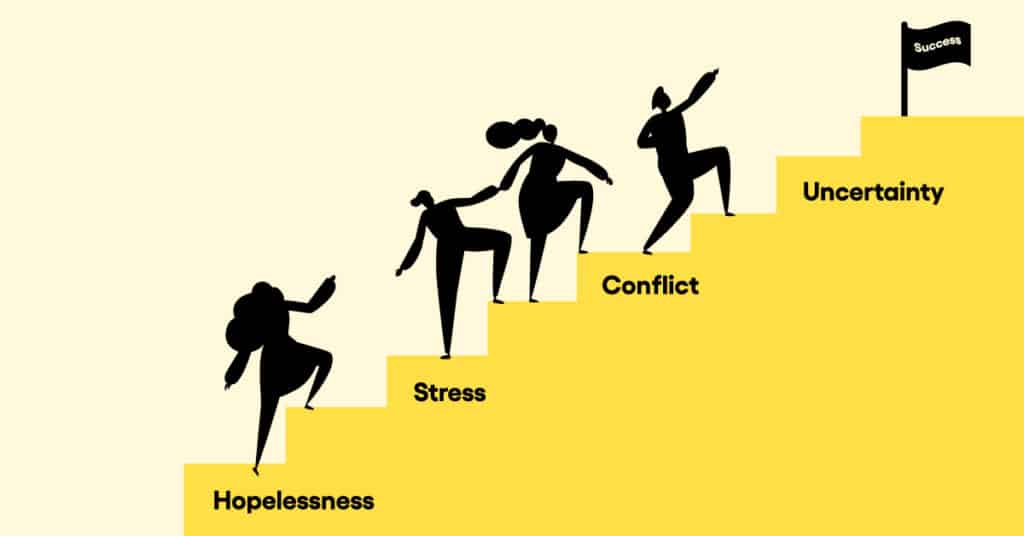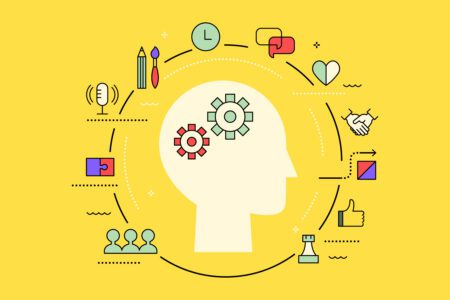Employee turnover can be costly both financially and to your company’s growth. The need to regularly replace employees takes a significant chunk of your business budget. Additionally, it also negatively impacts the culture of your workplace. If you’ve ever wondered just how much your organization loses when an employee leaves, you can figure it out with an employee turnover cost calculator.
What if you could save all that money and build a more positive workplace? Helping employees develop professional skills and abilities can help you retain them longer. It will also benefit your organization by developing high potential employees and future leaders.
What are key areas of development for employees?
The term area of development refers to a specific skill or attribute that can improve one’s growth. Improving even just one area of development can make a stronger employee. Their improvement will motivate them and encourage them to continue investing in their professional development and career path.
Additionally, managers have a crucial role in identifying key areas of growth for employees and discussing professional development plans. As a manager, you’re in the best position to assess a worker’s strengths and weaknesses. HR teams and managers can work together to identify areas/zones of development by using behavioral insights. Companies often hire for skills & experience but will lose employees over behaviors.
Examples of areas of development for employees
There are many different areas of development that employees can work on. In this article, we’ll break down six different areas of development managers can help employees focus on. We’ll also provide tips to identify these areas for improvement using SuccessFinder’s platform. By the end, you’ll be well equipped to approach employees and make professional development plans with them.
Let’s start by outlining six skills managers can help employees develop:
1. Leadership skills
Leadership skills are something that all employees can benefit from working on. Enhancing leadership skills can unlock more senior-level opportunities within the organization. It can also improve employee confidence. Some of the leadership skills you can help employees focus on include:
- Delegation;
- Planning, and
- Constructive feedback.
Managers can coach employees themselves or connect them with more experienced individuals who can provide them with feedback to prepare them for leadership roles. In this way, employees will become better leaders on their teams and hold themselves accountable to a higher standard of performance.
2. Organizational skills
Improving organization skills can benefit an employee’s professional and personal life. They will learn how to be more efficient and productive in their roles. Skills to focus on include:
- Time management;
- Productivity;
- Teamwork, and
- Stress reduction.
Employees will undoubtedly already have some of these skills. But during times of uncertainty and change, managers can’t go wrong by continuing to encourage the development of these skills. For example, managers can discuss challenges to an employee’s productivity or time management while working remotely. Despite the fact that we all had to adjust to changing work environments, some adapted more quickly than others to remote work. For this reason, managers should discuss these challenges with their employees and even connect them with each other.
Additionally, group discussions can be set up. These enable employees to be transparent about their challenges and identify ways to overcome them. These group discussions encourage peer learning which has many benefits for team culture and knowledge sharing.
3. Communication skills
Learning to listen and engage others in positive ways impacts an employee’s professional life as well as the workplace culture. Managers can help employees focus on improving their emotional intelligence and active listening skills by discussing their strengths and weaknesses in these areas and how they can work on them so they thrive in their role. Self-awareness greatly helps individuals understand their areas of development and a tool like SuccessFinder’s Profile Insights will empower them with that self-knowledge as well as coaching tips towards practicing less natural behaviors.
Bringing to light the ways employees can develop their communication skills helps them consciously notice opportunities where they can practice them. For example, during a meeting, an employee can practice active listening skills like maintaining eye contact and repeating what they heard to ensure they understand. Over time, employees will strengthen their communication skills, and practices like active listening will become second nature.
Another way employees can be encouraged to develop their communication skills is through networking. Starting a formal group mentoring program brings peers and leaders together to engage in discussion around common challenges, goals, and ideas. Their combined knowledge and different areas of expertise help each member solve problems and come up with new ideas. Their discussions are a great opportunity to build better relationships between teams and encourage the development of communication skills.
4. Negotiation
Good negotiations contribute significantly to business success and healthy workplace relationships. It’s an area of development that we can always get better at. Encourage employees to work on their assertiveness and their persuasion techniques with the help of checklists like HBR’s negotiation strategies. You’ll be able to use their strategies to role-play activities like presentations, sales calls, or conflict resolutions.
Managers can help employees develop their negotiation skills in tandem with communication or leadership skills. Doing so will empower employees to work through barriers and direct their careers’ progress. Additionally, helping employees learn strategies to negotiate more effectively will motivate them to pursue their goals despite challenges that previously held them back. It enables an agile mindset that promotes adaptive planning and continuous improvement.
5. Conflict management
Conflict in the workplace can be disruptive, but it’s also unavoidable. It’s common for employees to clash with colleagues at some point in their careers. Knowing how to resolve these situations diplomatically can improve workplace culture and reduce the amount of time wasted trying to solve the problem. To enhance their conflict management skills, employees can focus on developing more patience and empathy for others, especially if they know these competencies come less naturally to them.
6. Agile Mindset
Organizations change over time, and employees need to be able to adapt to these changing conditions. The pandemic made VUCA environments (volatile, uncertain, complex, and ambiguous) the new normal. Whether the changes are to their own team or the company’s leadership or structure, employees should be equipped to manage through change. What organizations need is an Agile Mindset model. The SuccessFinder Agile Mindset model can be used to identify employees who will thrive in environments where change is abrupt and constant. Our research into the Agile Mindset reveals that individuals with an Agile Mindset possess four qualities:
- They adapt and persevere through uncertainty
- They focus on the team rather than only themselves
- They collaborate and consult to make the best decisions
- They are relentless in pursuing their goals but flexible in their approach
Developing an agile mindset in employees will undoubtedly lead to positive outcomes for their teams and organizations.
Tips for managers to identify areas of development for employees
As a manager, your support can make a huge difference in employee development, which can help your organization reduce turnover and improve talent. However, if you are not sure where to start, here are some tips to help you identify areas of development for employees.
Identify areas for improvement with SuccessFinder’s Profile Insights
Successfinder Profile Insights can simplify the process of identifying what skills employees should focus on developing. The tool takes a comprehensive look at behavioral competencies. It then offers insights for each employee along with steps they can take to develop different areas. One of the best features is the flexibility to tailor insights to various situations. Our ROI calculator will reveal organizational savings by adding behavioral insights and increasing productivity and decreasing turnover.
Support employee development through mentoring relationships
Workplace mentorships offer an excellent way to boost employee development. They help create a space where employees can work on different areas of their professional development.
Whether this is done through one-on-one mentoring, group mentoring, remote mentoring, or peer mentoring, employees will be encouraged to set goals and work to achieve them. They will benefit from the support and encouragement of mentors. Additionally, it puts them in the driver’s seat of their professional development with the help of a mentor who holds them accountable to reaching their goals.
Solicit feedback on goals and challenges
Sometimes the easiest way to uncover areas of development for employees is to ask. Employees can offer feedback on their goals and the challenges they face, which can help managers identify the areas that need work. You can send out an email request to employees or have a meeting or discussion to solicit feedback on their goals. Getting to know your talent better, including what they hope to achieve in their career, provides insight so managers know how to best help employees.
Managers are crucial to employee development
Your top talent is hungry to learn. But they need direction. One survey found that 56% of employees want help from their managers to identify where they can improve. Likewise, almost 75% of the same employees shared they felt empowered to drive their career forward when their manager was active in supporting their development.
Managers play a key role in driving the development of their teams. SuccessFinder supports managers’ goals with tools like predictive hiring and employee insights. With them, SuccessFinder empowers managers to become better coaches and build high-performance teams. Learn more about our platform and see what’s possible by booking a demo today.
About Ryan Carruthers
Ryan Carruthers is the Content Marketing Manager at Together Software, a company that builds software to help enterprise companies run effective mentorship programs within their organizations.





